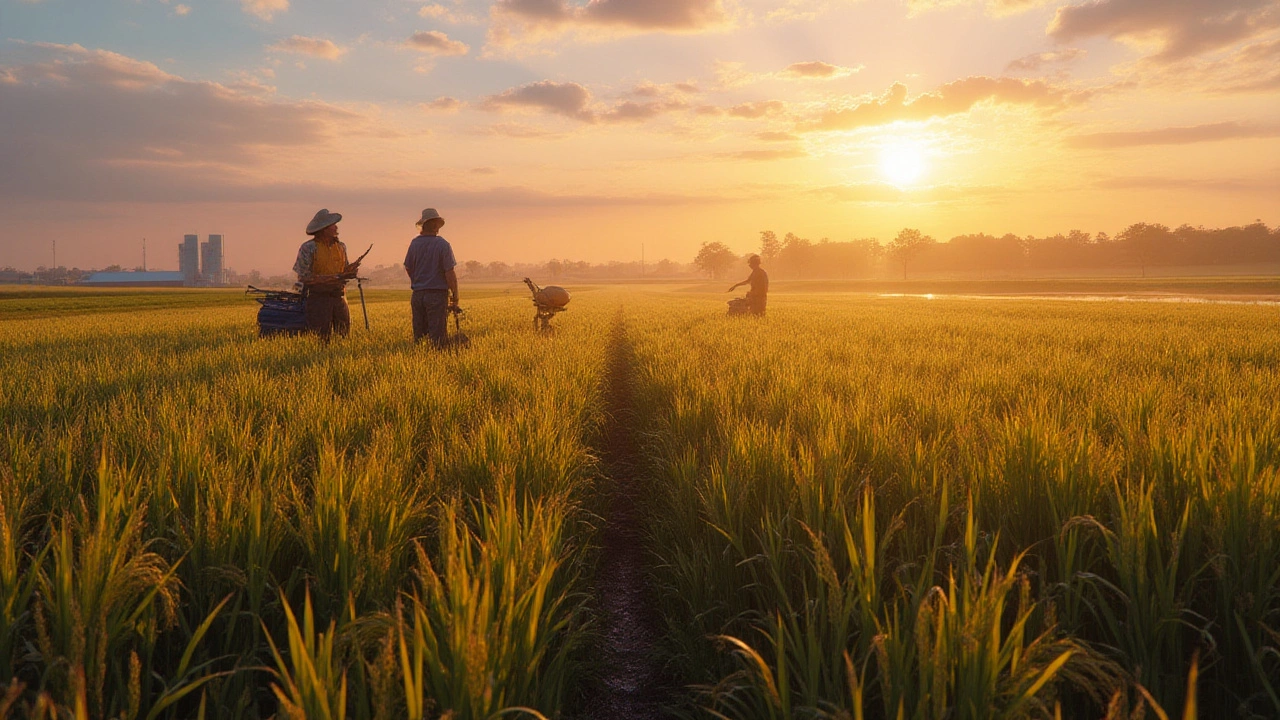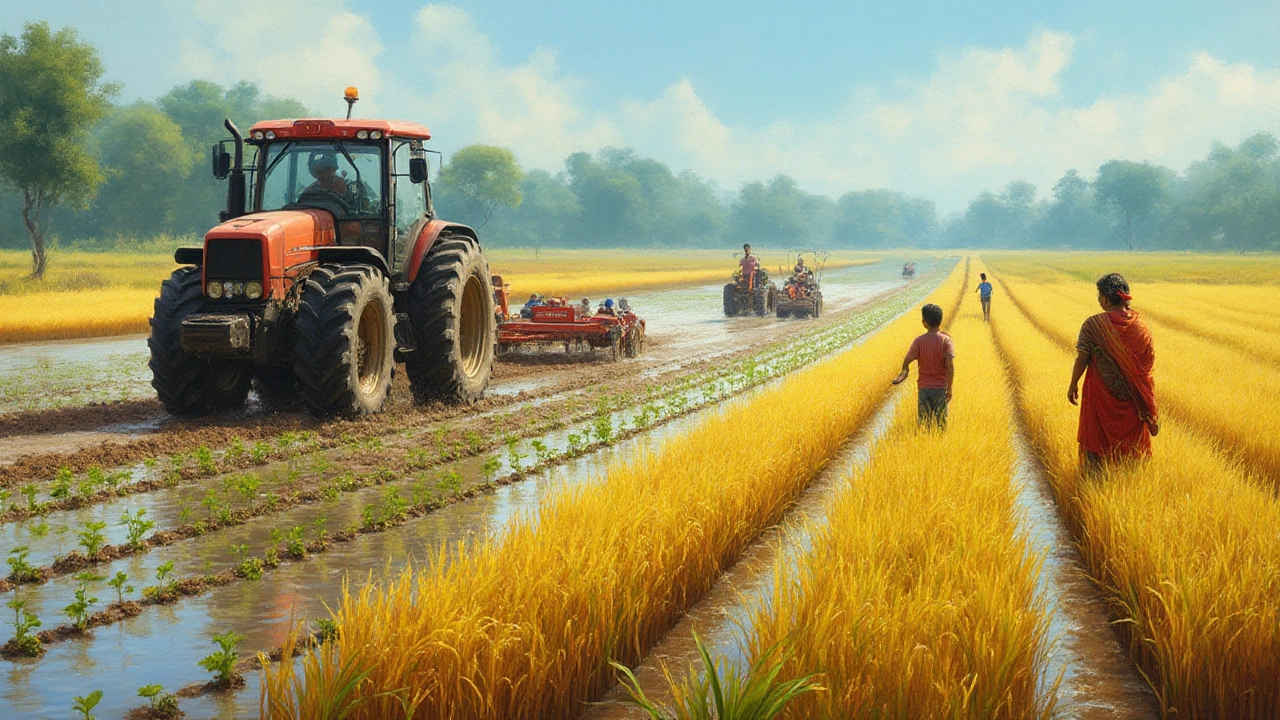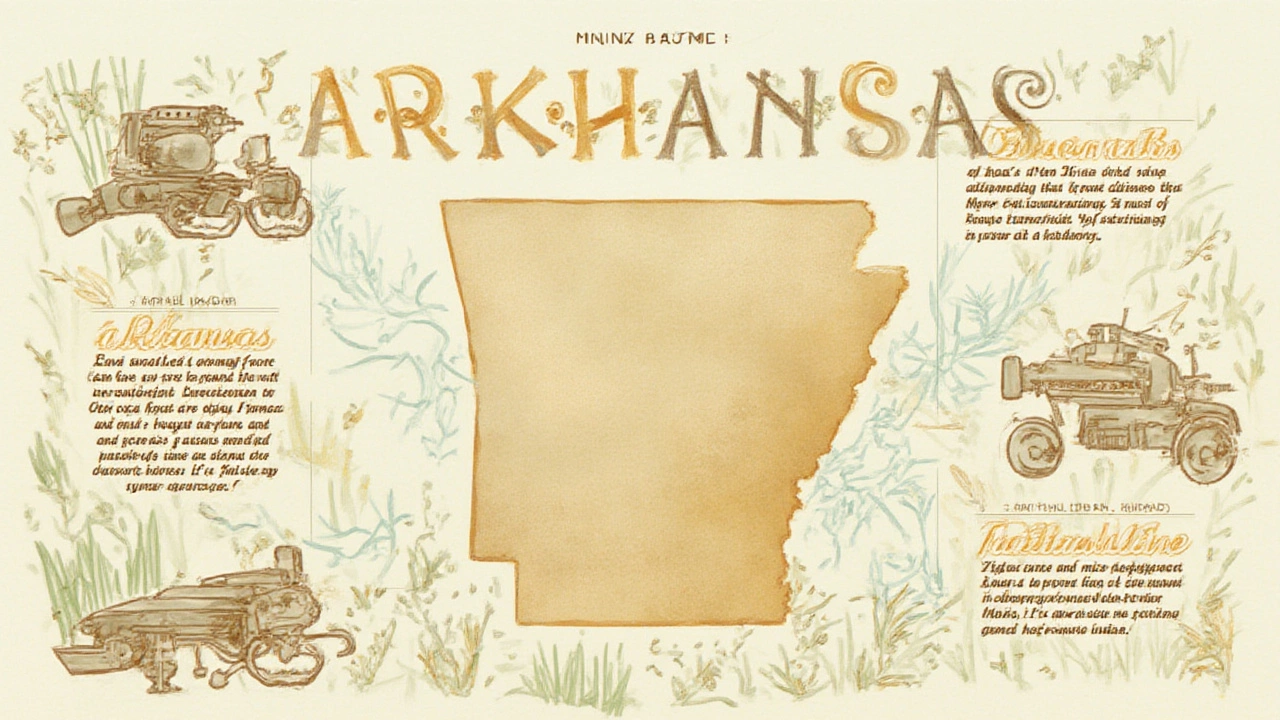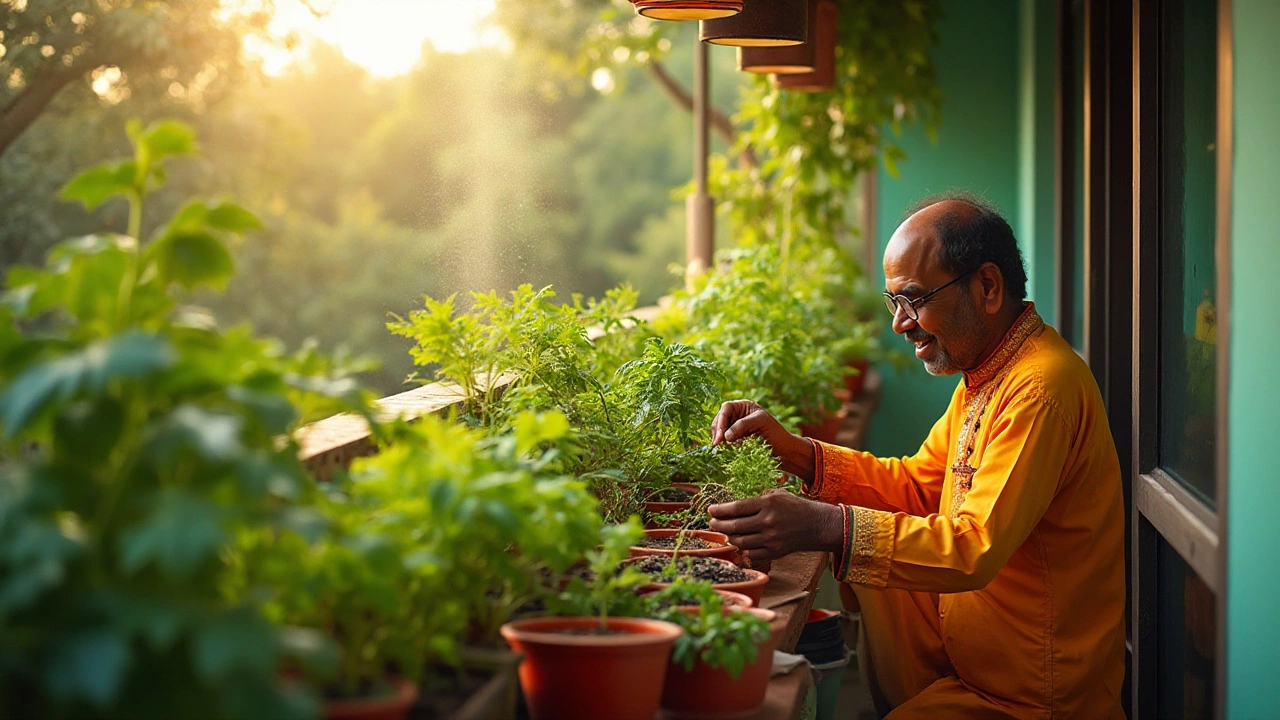Top Rice Producing States in the US: Where Most Rice Comes From

Think about rice for a second. It ends up on our dinner plates as fluffy, comforting, and filling, but there’s a wild story behind those grains. The US isn’t the world’s biggest rice producer—you’ll find China and India fighting for that crown—but it still cranks out millions of tons every year. Ever wondered what single state leads the pack and fills those massive silos? That’s not just trivia; it’s a testament to how nature, science, and a heap of good old hard work come together.
The Reigning Champion: Arkansas and Its Rice Empire
Ask anyone deep into agriculture, "What state produces the most rice?" and you’ll hear "Arkansas" almost every time. Not Texas, not California—Arkansas. This isn’t just local legend. Year after year, hard numbers back it up, and no state comes close. In 2024, Arkansas harvested more than 102 million hundredweight (cwt) of rice, which is about half—let me say that again, half—of all the rice grown in the US. That’s not a fluke, either. Arkansas has been wearing this crown for decades, thanks to its perfect combo: rich, flat land and the right climate. The Mississippi River Delta, stretching across eastern Arkansas, is downright made for rice.
But it’s not only about land and weather. Arkansas growers have a serious edge because they keep up with tech. A lot of the fields are laser-leveled for water efficiency—seriously, they bring in lasers and heavy machines to flatten out entire fields so water is distributed perfectly. Irrigation isn’t guesswork; it’s carefully managed, making sure water is there when plants need it most but not wasted. And the state’s policies support farmers with research-backed programs and rice-specific infrastructure. Out of the 1.4 million acres of rice planted in the US last year, Arkansas alone had more than 1.1 million acres.
Why does Arkansas bother with rice and not just soybeans or corn? Well, it’s not only tradition. It’s the kind of thing that creates jobs—thousands of them, not just on the farms but in processing plants, seed research centers, shipping, and even food companies. Not to mention, the local culture wraps around rice, with festivals like the Arkansas Rice Festival in Weiner drawing crowds from all over. Ask someone who’s lived there long enough if they remember their first rice harvest, and they’ll likely smile and rattle off a memory or two.
If you drive through the state during spring and summer, don’t be shocked if you spot flooded fields. Those aren’t ponds but rice paddies. You can even watch clouds of herons and egrets picking their way across the water. There’s a reason some locals joke about "Arkansas caviar"—it all comes from those fields filled with life and steady work. And with new hybrid varieties and ever-more-efficient methods, Arkansas isn’t giving up the title any time soon.
How Rice Grows: Flooded Fields and Smart Farming
Most Americans have never seen rice growing up close, which is kind of wild considering how common it is on the menu. Rice isn’t like corn or wheat. It needs lots of water. That’s why you’ll often spot those famously flooded fields in the southern part of the country. The technical word is “paddy.” They’re not traditional ponds—farmers actually build levees to trap water for most of the crop’s growing cycle.
In the spring, Arkansas, California, Louisiana, and others plant rice as soon as temps warm up. Seeds go straight into carefully tilled, leveled soil. In Arkansas, most growers use the water-seeding method—instead of just dropping seeds on dry dirt, they flood the fields first and then broadcast seed onto the water. Those little plants pop up fast, but so do weeds, so growers keep the fields flooded to keep unwanted guests at bay. After a few weeks, the fields are drained to let the rice plants mature and stay healthy—and then fields might get flooded again as needed. All of this is a careful dance to keep the plants damp but not drowning.
Farmers also keep a close watch on fertility, pests, and diseases. Rice can attract a parade of trouble: blast fungus, rice water weevil, and the dreaded sheath blight. Today, Arkansas and other leading states use GPS-guided tractors for precise fertilizer use and drones for monitoring. The result? Less wasted fertilizer and smarter use of pesticides, which means lower costs and less impact on the local environment. Some farms are even experimenting with alternating wet and dry periods to save water without hurting yields—a move inspired by water-scarce Asian countries.
It’s also not just about traditional white rice. Arkansas fields support many types—long grain, medium grain, and specialty varieties like jasmine and basmati. And if you’re super into food labels, you’ll spot quite a few “Arkansas Grown” stickers in stores that source their rice close to home, banking on that Southern heritage and reputation for quality. Even Japanese sushi chefs sometimes prefer the rice from Arkansas, thanks to its reliably sticky texture.

Other Rice Powerhouses: California, Louisiana, and the Rest
So Arkansas runs the show, but it doesn’t own the whole stage. California comes in distant second but for different reasons. Here’s a fun detail: most of the sushi rice you eat in the US? It’s grown in California’s Sacramento Valley. Unlike Arkansas, California focuses heavily on premium short- and medium-grain rice, ideal for sushi and risotto. In 2024, California raised about 32 million cwt—enough to make a difference but nowhere near Arkansas’s bounty.
Louisiana, Mississippi, Missouri, and Texas all chip in, too. Together, these five states are called the “Rice Belt.” Louisiana has hot, muggy summers that rice plants love, and its farmers often double-crop—meaning they plant a quick crop of rice and then follow up with soybeans in the same field, all in one year. Missouri’s Bootheel region and Mississippi’s Delta contribute somewhat smaller but still solid amounts. Texas, particularly around Beaumont and Houston, has its own history of big rice ranches, but urban growth and drought have squeezed farms there, so output has fallen below Louisiana lately.
You might be surprised to know that, despite the myth, you’re not likely to find commercial rice fields in the Midwest or Northeastern US. The climate just doesn’t cooperate, and the soils are all wrong. It takes a mix of warm weather, lots of water, and flat land—something the lower Mississippi Valley and parts of California have in spades.
Each state’s growing season and preferences shape what sort of rice you find. Arkansas is king of long-grain, while California’s “Calrose” rules sushi and specialty aisles. Louisiana crafts some of the best medium-grain, ideal for gumbo and jambalaya. If you look up stats for 2024, here’s how it stacks up:
| State | 2024 Harvest (cwt) | Main Varieties |
|---|---|---|
| Arkansas | 102 million | Long-grain, medium-grain |
| California | 32 million | Medium-grain, short-grain |
| Louisiana | 15 million | Long-grain, medium-grain |
| Missouri | 13 million | Long-grain |
| Texas | 8 million | Long-grain |
| Mississippi | 6 million | Long-grain |
That’s a tight snapshot of the scene. But what’s neat is how each region adapts to market changes, water challenges, and consumers’ shifting tastes. Foodies have helped smaller producers in Arkansas and Louisiana experiment with boutique varieties, driving up interest in local, sustainable rice.
Economic and Environmental Impact of US Rice Farming
If you only look at stats, you might miss just how essential rice is for entire communities across the South and California. Get this: US rice production is an economic giant, supporting more than 125,000 jobs, as reported by the USA Rice Federation. This isn’t limited to farmhands. You’ve got plant breeders developing new hybrids, truckers hauling grain to mills, mill workers, scientists troubleshooting pests, and traders cutting international deals. Rice brings billions of dollars into regional economies, putting money in the pockets of small business owners too.
The US exports about half its rice crop, much of it from Arkansas and California. Our rice heads to places like Mexico, Haiti, Japan, and Saudi Arabia. In fact, Arkansas alone shipped rice worth nearly $2 billion in exports last year. For farmers here, strong international demand keeps the industry afloat even when American tastes shift away from white rice toward lower-carb options. Ever ordered a bottle of sake at a fancy restaurant? There’s a good chance the brewer started with US-grown rice.
Still, there’s no ignoring environmental questions. Rice is a thirsty crop—it needs huge amounts of water, which can be dicey in drought-prone areas. California rice farms are constantly experimenting with smarter irrigation or dry-farming. Arkansas growers now use “alternate wetting and drying” to save both water and minimize methane emissions (an impactful greenhouse gas rice paddies can create). In some fields, clever software tracks exactly how much water gets used and flags leaks automatically.
Rice farming is also a lifesaver for wildlife in Arkansas. Believe it or not, when migratory birds head south, many rely on flooded rice fields as pit stops. The fields act like temporary wetlands. Every winter, you’ll spot ducks, geese, and shorebirds by the thousands taking a break on their journey. Farmers have even teamed up with conservation groups to purposefully flood fields after harvest, boosting local biodiversity. There’s a tight balance, though: protecting nature while banking on a reliable harvest isn’t easy. But the sector is proof that good business and environmental care don’t have to clash—it just takes work and a dash of innovation.
The next big challenge? Climate change. Warmer winters can shift the timing of planting; tougher droughts might squeeze water supplies, especially out West. Still, the rice industry is thick-skinned, already tinkering with hardier strains that shrug off disease or dry spells. If anything, it keeps everyone on their toes, driving a slow but steady evolution in how American rice farms operate.

Fun Rice Facts and Tips: What You Should Know
Here’s something wild I learned from Priya—my spouse, who loves reading food labels. Most of the "Grown in the USA" rice on the shelf is almost certainly from Arkansas. That’s not just good for local pride; it means the supply chain is short, traceable, and fresh. Want to shop American? Just check those bags at the supermarket and look for the state of origin—rice grown in Arkansas is likely to be labeled as such.
More rice trivia: The average American eats about 27 pounds of rice a year. That’s peanuts compared to folks in Asia, where it can top 150 pounds per person, but it’s enough to keep US growers busy. Ever wonder what happens to broken rice grains that get sorted out at the mill? Most end up in cereal, pet foods, or even brewing. No waste here.
If you’re cooking rice at home, try rinsing it two or three times before throwing it in the pot. That clears away extra starch and keeps things fluffy. Seen those bags that say "enriched"? That’s added nutrients like iron and B vitamins—because polishes and milling can strip some good stuff away.
Are you cooking for a crowd or just prepping ahead? Try the traditional Louisiana jambalaya: loads of rice, sausage, seasoning, and a hearty scoop of gumbo. California rice, especially short-grain, works perfectly for sticky Asian-inspired dishes or sushi at home. If you want a local twist, toss in Arkansas-grown long grain for stir-fries or classic Southern casseroles. And if you can shop local at a farmer’s market, don’t be surprised if the grower shares stories about weather, machines, or even family history riding on the harvest.
- Tip: Store rice in airtight containers—keeps bugs and pantry pests away, especially in humid places.
- For eco-conscious cooks: seek rice labels that mention "water-saving" or “wildlife friendly”—some Arkansas farms now use bird-friendly methods verified by third parties.
- Bulk buying? Keep what you need in the pantry and freeze the rest for extra-long storage.
- Leftover rice? Chill it fast, then use it for fried rice the next day. Chilled rice fries up better—it won’t stick together as much.
So, next time you savor a bowl of Southern red beans and rice, sushi, or even a rice pudding, you’re taking part in a big—and surprisingly high-tech—American story. Whether you grab a bag from the grocery store or visit fields down South, the rice likely started somewhere under the Arkansas sky, brought to life by a combination of nature, sweat, and a dose of ingenuity.





